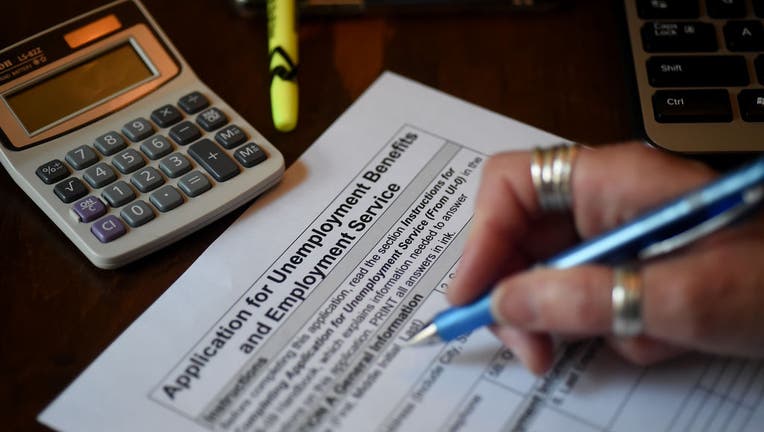Florida’s jobless rate shoots to 4.3%, highest in 2 years

In this photo illustration, a person files an application for unemployment benefits on April 16, 2020, in Arlington, Virginia. (Photo by OLIVIER DOULIERY/AFP via Getty Images)
ORLANDO, Fla. - Florida’s unemployment rate shot up to 4.3% in March, as coronavirus-induced closures of Florida’s theme parks, hotels and large numbers of businesses caused the highest levels of joblessness in almost two years.
It was a dramatic increase from the state’s previous month’s unemployment rate of 2.8%, and economists warned that March’s preliminary numbers didn’t capture the extent of the damage caused by business closures.
“Just because it’s still pretty recent, the data cannot capture the current economic situation. It still shows a very dark outlook,” said Hector H. Sandoval, the director of the economic analysis program for the Bureau of Economic and Business Research at the University of Florida.
RELATED: Unemployment relief not coming soon enough
The last time Florida’s unemployment rate was that high was in May 2017, according to the Bureau of Labor Statistics.
Among those who lost their jobs last month was Ivette Cruz, who worked for a third-party caterer that fed the workers at Walt Disney World. The theme park resort outside Orlando closed its gates to the public in mid-March because of coronavirus concerns, and Disney officials say they don’t know when it will reopen.
“Right now, I’m not paying any of my bills,” Cruz said. “The only thing I paid with my last check was light and water. I called the credit card companies and some of them are giving me two or three months extensions. But right now, I’m stressing out because I have to come up with this money.”
The real extent of the damage is not going to be apparent until the April report comes out, said Sean Snaith, the director of the University of Central Florida’s Institute for Economic Forecasting.
RELATED: Florida economic task force meeting today to work on state's reopening plan
The impending furloughs of more than 43,000 workers at Walt Disney World will surely further swell the state’s number of jobless, particularly in industries that rely on tourism, Snaith said.
“You just can’t shut off large swaths of the economy and expect that there’s any better outcome than what we’re seeing,” Snaith said. “As close to real-time data that we have in the economy is the unemployment claims, and here in Florida there has been a bit of a bottleneck in getting those processed. Even those aren’t giving the best picture at this point.”

